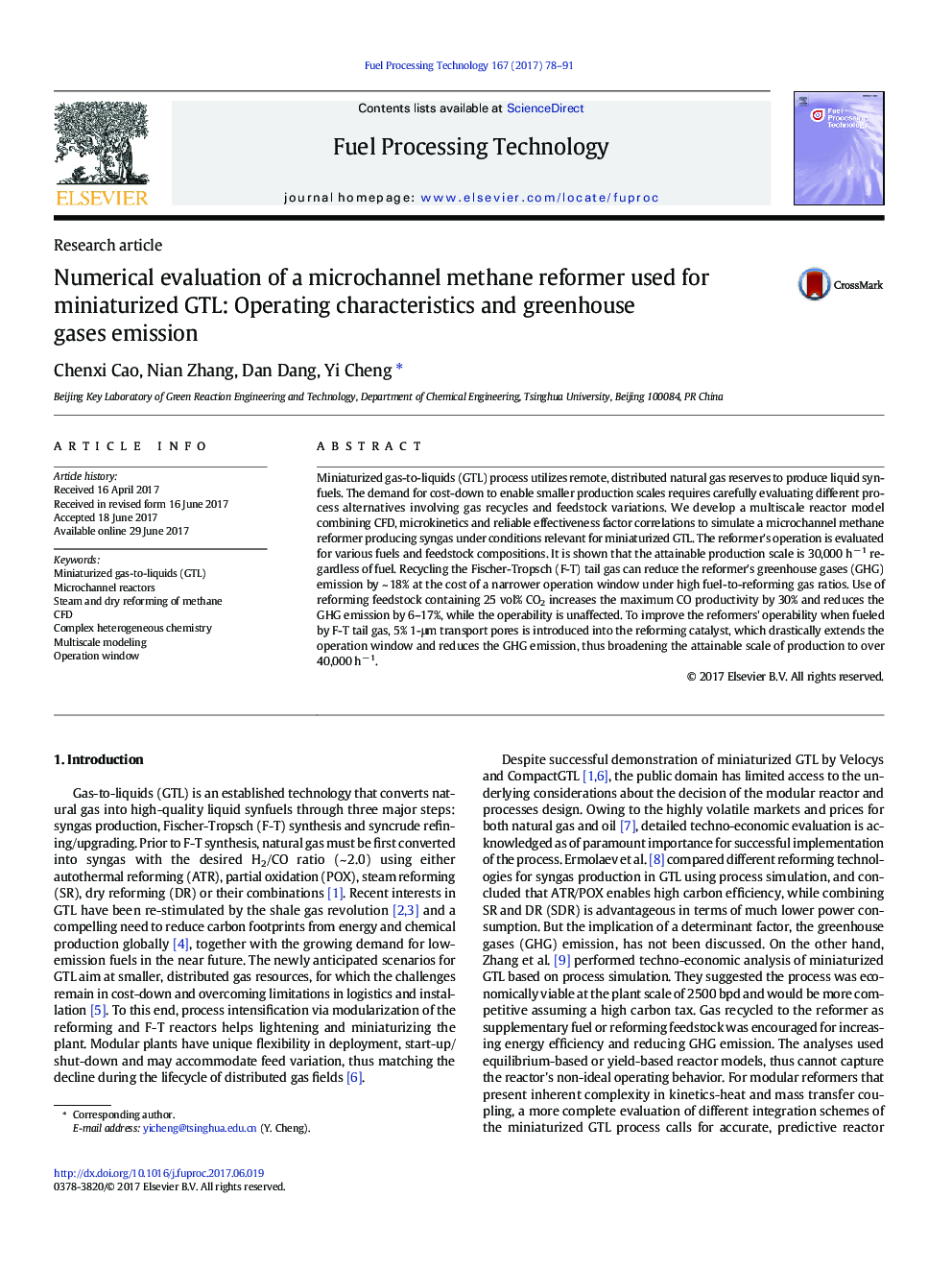| کد مقاله | کد نشریه | سال انتشار | مقاله انگلیسی | نسخه تمام متن |
|---|---|---|---|---|
| 6476228 | 1425379 | 2017 | 14 صفحه PDF | دانلود رایگان |

- A multiscale reactor model of integrated microchannel methane reformer
- Reformer's operation window delineated for various options of miniaturized GTL
- Recycled fuel reduces GHG emission at the price of poorer operability.
- Combined reforming improves CO productivity and suppresses GHG emission.
- Better operability and GHG emission using more diffusible reforming catalyst
Miniaturized gas-to-liquids (GTL) process utilizes remote, distributed natural gas reserves to produce liquid synfuels. The demand for cost-down to enable smaller production scales requires carefully evaluating different process alternatives involving gas recycles and feedstock variations. We develop a multiscale reactor model combining CFD, microkinetics and reliable effectiveness factor correlations to simulate a microchannel methane reformer producing syngas under conditions relevant for miniaturized GTL. The reformer's operation is evaluated for various fuels and feedstock compositions. It is shown that the attainable production scale is 30,000 hâ 1 regardless of fuel. Recycling the Fischer-Tropsch (F-T) tail gas can reduce the reformer's greenhouse gases (GHG) emission by ~ 18% at the cost of a narrower operation window under high fuel-to-reforming gas ratios. Use of reforming feedstock containing 25 vol% CO2 increases the maximum CO productivity by 30% and reduces the GHG emission by 6-17%, while the operability is unaffected. To improve the reformers' operability when fueled by F-T tail gas, 5% 1-μm transport pores is introduced into the reforming catalyst, which drastically extends the operation window and reduces the GHG emission, thus broadening the attainable scale of production to over 40,000 hâ 1.
Journal: Fuel Processing Technology - Volume 167, 1 December 2017, Pages 78-91